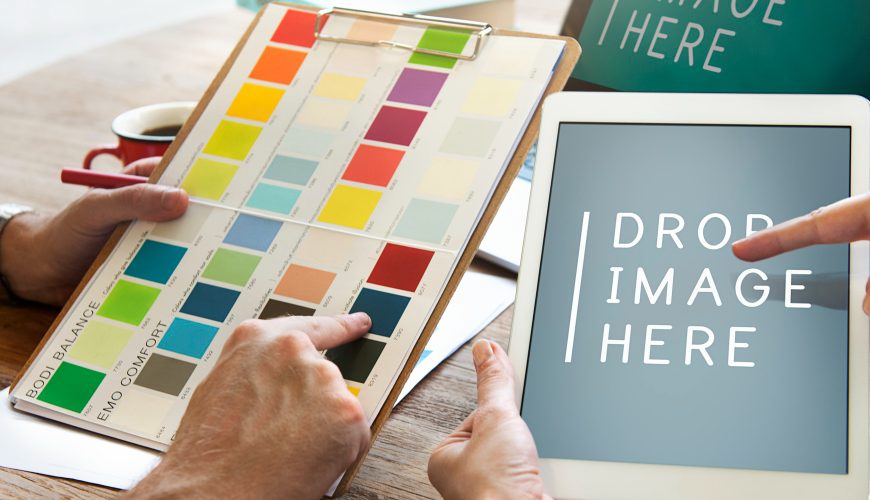Color is often treated as a decorative afterthought in digital spaces, yet research shows that it plays a fundamental role in shaping how readers absorb, interpret, and emotionally respond to written material. A blog’s color palette does far more than create visual appeal—it can influence cognitive clarity, emotional tone, and even the degree of trust a reader places in the author’s words. The interplay between psychology, design, and perception reveals that color selection is as critical to storytelling as the words themselves.
Color psychology offers evidence that human brains do not process text in an isolated channel. Instead, words are filtered through a backdrop of color, contrast, and overall design environment. When a reader lands on a blog post, their first impression is not formed by the first sentence but by the visual whole of the page. Background hues, font color, and accent tones all shape the initial cognitive and emotional response.
For instance, multiple studies show that poor contrast between text and background significantly slows reading speed and increases eye strain, whereas high-contrast pairings (such as dark gray or black text on a white or lightly tinted background) support faster recognition of letter forms and smoother comprehension. Conversely, overly bright backgrounds, clashing contrasts, or neon tones can draw attention away from the words themselves, hindering absorption of ideas.
Beyond mechanical readability, dominant hues affect emotional resonance. A deep navy backdrop with white text conveys authority and gravity, subtly priming the reader to approach the content with seriousness. In contrast, a soft cream background might make the text feel approachable, relaxed, or even nostalgic. Thus, a blog’s color palette is not a decorative garnish but an active element in shaping interpretation.
Understanding the Emotional Undercurrents That Specific Color Families Stir Within Readers
Each color family stirs associations deeply embedded in human psychology and, often, in cultural symbolism. Warm shades such as reds, oranges, and yellows possess stimulating properties. They can energize readers, accelerate reading paces, and communicate enthusiasm or urgency. That is why news blogs or lifestyle content aiming to inspire action often weave in these tones.
On the other hand, cool shades such as blues and greens frequently induce calmness, heighten trust, and encourage focus. A green-toned blog environment can make sustainability topics feel authentic and grounded, while blue tones are commonly seen in professional or financial blogs because they subtly signal reliability.
Neutrals such as beige, gray, or white offer balance, allowing text to stand at the forefront. They provide a sense of minimalism that can be especially effective for long-form reading, where distraction needs to be minimized and the emotional baseline is one of calm attentiveness.
What is especially fascinating is that mood alteration goes beyond emotional response into tangible behavioral patterns. Researchers have found that color palettes can impact not only perceived trust but also how much information readers retain. Subtly tranquil backgrounds like light blues or soft off-whites improve focus for extended reading, whereas overstimulating backgrounds can shorten attention spans.
The Interplay Between Readability, Contrast, and Design Cohesion
A blog’s visual identity relies on harmony between color, text, and design structure. Readability is one of the first technical challenges: does the color choice support the eye’s ability to travel smoothly across lines of text, or does it obstruct mental flow?
High contrast settings, such as dark text on a pale background, remain a gold standard for readability. However, contrast does not operate in isolation. If the entire palette is constructed only around stark opposition, the blog may feel cold or aggressive. Conversely, harmonized palettes that use shades from neighboring color families can convey elegance but risk becoming too muted, potentially reducing text distinction.
Cohesion across the entire site matters equally. A blog that uses clashing or inconsistent colors may appear chaotic, reducing perceived professionalism and undermining trust. Meanwhile, a carefully blended palette—perhaps balancing a dominant color family with supportive neutrals and one accent—can create a seamless atmosphere where the words become easier to engage with and the reader feels gently guided.
Over time, these subtle differences influence retention and loyalty. A blog with crisp readability and cohesive tonality becomes easier to return to, while one with poor color design may unconsciously exhaust the reader, leading them to disengage even if content quality is high.
Practical Strategies for Bloggers and Content Creators
Bloggers and content creators who wish to harness the power of color should view their palette as part of their storytelling toolkit. Below are strategies to implement:
- Align Palette With Audience Demographics
Consider the preferences and cultural context of the target readership. For example, younger audiences may respond positively to bold and experimental palettes, while professional readers may prefer restrained, elegant tones. - Prioritize Accessibility
Accessibility standards—such as ensuring sufficient color contrast for visually impaired users—are essential. Tools like color contrast checkers can verify that color combinations meet recommended readability ratios, ensuring inclusivity. - Balance Branding With Clarity
While brand consistency is valuable, palettes should not overpower readability. Accent colors can reinforce brand identity in headers, buttons, or highlights while maintaining a calm and neutral stage for body text. - Use Emotional Cues Strategically
Employ warm colors to energize short calls-to-action or engagement prompts, and use cool, muted tones for long-form reflective reading. Deliberate variation within posts can subtly align mood with intended message. - Experiment and Measure
A/B testing and analytics can reveal which color schemes improve readership time, reduce bounce rates, or boost content sharing. Readers’ feedback is equally valuable, as small palette tweaks can dramatically shift perception.
The influence of a blog’s color palette extends far beyond aesthetics. By shaping perception, setting emotional tone, and enhancing or impeding comprehension, color acts as a silent partner to text. Subtle choices—whether a calming sage green background, high-contrast minimalist typography, or a bold accent strategically placed—will directly affect how readers feel, trust, and engage with the written word. Bloggers who recognize and intentionally design with this reality in mind can transform their blogs into not only information sources, but immersive experiences that resonate deeply and linger long after the screen has dimmed.









